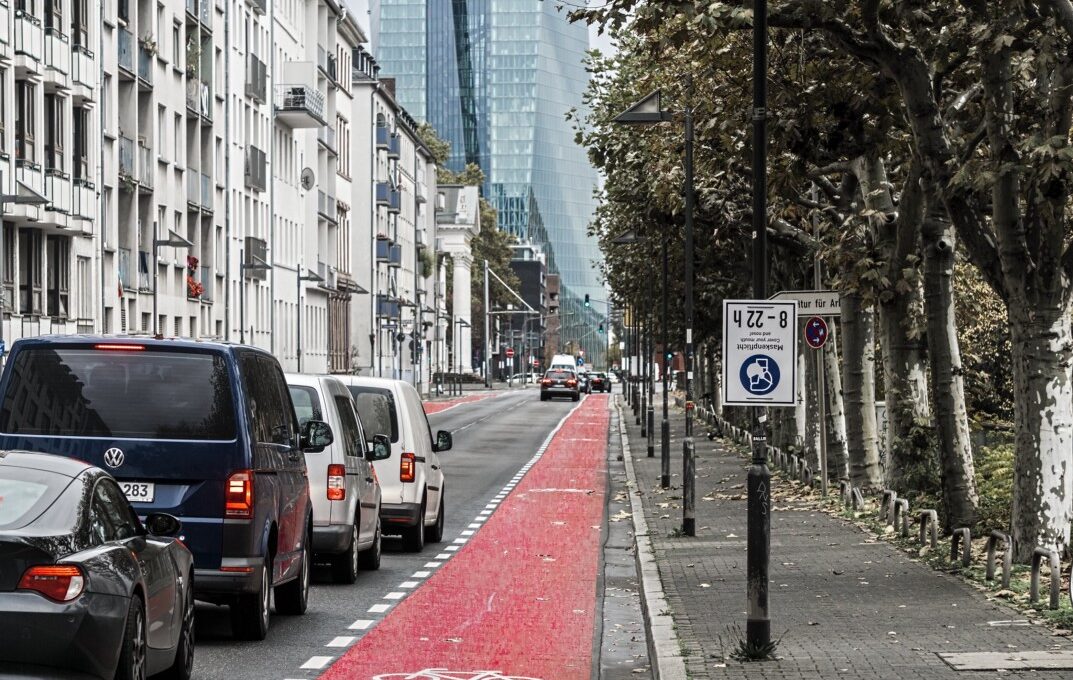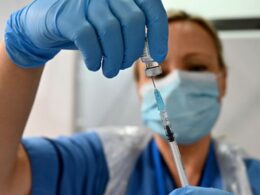WHO General Director asked everyone to make a New Years Resolution to get behind the campaign to vaccinate 70% [globally] by July 2022
This is a republication of the article below, with the title above.
Two Years Into Pandemic WHO Warns Of Omicron ‘Tsunami’; Variant Confounds Easy Predictions
Health Policy Watch
Elaine Ruth Fletcher
29/12/2021
Two Years Into Pandemic WHO Warns of Omicron ‘Tsunami’; Variant Confounds Easy Predictions
As the world marks two years since the emergence of the first reports about a “novel coronavirus” circulating in Wuhan China, countries in Europe, North America and elsewhere are facing yet another “tsunami” of infections — this time driven by the highly-infectious Omicron variant, warned WHO Director General Dr. Tedros Adhanom Ghebreyesus.
He spoke at a press conference Wednesday marking two years since the first public message about the emergence of the coronavirus was posted on 31 December by the Wuhan Municipal Health Commission — delivered by WHO’s China country office to Geneva headquarters. On that same day, Taiwan also c onveyed private messages to WHO about the Wuhan outbreak, that it’s surveillance had identified.
Fast-forward to December 2021, and some 5.3 million people have died so far this year — more than double the death toll of last year, noted Ghebreyesus.
And while the new SARS-CoV2 Omicron variant may be yielding lower hospitalization rates, the sheer numbers of infections being recorded every day could still lead to major hospital overloads — particularly in European countries that are already seeing some of its highest rates ever of new infections, he and other senior WHO officials warned.
But they also held out hope that the pandemic could also be finally squelched in 2022 — if enough of the world’s expanding vaccine supplies could be directed to reach under-served countries and populations that have so far vaccinated less than 50 percent of their eligible population.
“ I ask everyone to make a New Years Resolution to get behind the campaign to vaccinate 70% [globally] by July 2022. We have 185 days to the finish line,” said the WHO Director General, repeating an oft-stated mantra that vaccine inequities are prolonging the pandemic.
“ I ask everyone to make a New Years Resolution to get behind the campaign to vaccinate 70% [globally] by July 2022
‘Dual Track’ pandemic
While omicron infection rates soar among younger people, the virulent Delta variant of the virus is still causing considerable hospitalizations and severe disease — particularly among older and more vulnerable groups who are under-vaccinated — or unvaccinated, said Mike Ryan, WHO’s Executive Director of Health Emergencies.
“What we’re seeing is this dual circulation. We’re seeing a well established delta wave, and that’s affecting all age groups, and particularly causing a lot of hospitalizations and severe disease among older persons, and particularly particularly the under vaccinated or unvaccinated. But vaccines have held up quite well in protecting these individuals.
“Then we have this emerging Omicron wave which has primarily begun amongst younger people, reflecting social mixing patterns… It’s moving slowly into older age groups now.
“And I think the big question in my mind is: will the virus behavior look milder [in those groups]?
“It looks like it’s causing a milder disease, on the face of it looking at the population that’s infected. But what we haven’t seen is the omicron wave fully established in the broader population.
“And I’m just I’m a little nervous to make positive predictions until we see how well the vaccine protection is going to work in those older and more vulnerable populations — to see whether previous infection or vaccination is going to provide the same levels of protection against severe disease and hospitalizations [as it did in the case of Delta].
“Or is this virus inherently less virulent in any case, in its own right?” Ryan said.
Case declines in South Africa — but that’s not necessarily a weathervane for Europe
The fact that South Africa has seen a sharp decline in Omicron cases in recent days, as well as a lower rate of hospitalization in comparison to infections, are hopeful signs, Ryan said.
But it’s not clear to what extent Europe, which has an older population, which has been less exposed to the virus overall, will follow those same encouraging trends, he added:
“It remains to be seen in the coming weeks. I think we will still see that decoupling from cases and severe disease will be sustained in Europe.
“But with the sheer numbers of cases that we’re likely to get associated with the Omicron variant, that growth rate in the number of cases per day will ultimately generate sick people who will need to be admitted to hospital and could potentially die.
“I don’t think anyone is certain as to how this is going to play out. And that’s why caution right now, with getting exposed, and protecting those people in our population most likely to get the disease, physical protection, vaccine protection and then going by the public health advice in each jurisdiction. I think it’s really important over the coming weeks to suppress transmission of both variants to the minimum until we can until we see what is the impact of this virus [variant] in those older and more vulnerable populations.”
European countries applying stricter measures
Indeed, most European countries — where infection rates are among the world’s highest once more this winter — with a suite of new restrictions on social gatherings, cancellations or limitations on cultural events, and businesses encouraged to have employees work from home. .
Those have ranged from a German limitation on private social gatherings to just ten people in Germany, to a French call for people to to work from home wherever possible.
There have also been more severe lockdowns of all but essential businesses in the most stricken nations such as The Netherlands. In Denmark, cultural venues have closed and strict vaccine and mask mandates are in place at restaurants, cafes and bars, also being forced to stop serving alcohol after 10 p.m. and to close between 11 p.m. and 5 a.m.
The United States, meanwhile, was averaging 267,000 COVID cases a day over the past week , a record high, which experts attributed to twin attacks of the Delta and Omicron variant. That, in turn, led to a rippling domino effect of other measures, including delays in reopening dates for some universities in the new year, flight cancellations and absences of transit, travel and health workers.
The consequent labour disruptions led the US Centers for Disease Control on Monday to shorten its recommended isolation period for an infected individual from 10 days to just five — a measure that immediately sparked debate among experts over whether that would indeed propel infections even more.
Boosters — WHO messages out of step with countries
To counter the wave of infections, national leaders like the UK’s Prime Minister Boris Johnson on Wednesday were urging everyone to get boosted as soon as possible, noting that 90% of cases in ICU lacked their third jab — while the National Health Services wished the public a “jabby New Year”, highlighting a recent study on how most of people critically ill with COVID lack booster status.
WHO, however, continues to sound a different tune.
At Wednesday’s press conference, Tedros and his Chief Scientist Dr Soumya Swaminathan insisted once more that two shots are enough for most healthy people — while third boosters should be reserved only for those at highest risk.
The bigger focus for rich countries, said Tedros, should be on reaching people who are unvaccinated altogether as they are still the people most likely to have severe disease.
“that would have a better impact and also help us make progress toward ending the acute phase of the pandemic,” he said.
He admitted, however, that WHO’s opposition to universal booster jabs also is deeply rooted in fears that even with vaccine supplies expanding, booster campaigns could divert badly needed vaccines from the nearly 100 low- and middle-income countries that have yet to vaccine even 40% of their populations — as compared to the 60- 70% coverage seen in most high-income countries.
More new variants could be “fully resistant” to existing measures, WHO head warns
And that, WHO has warned, could lead to the emergence of still other new variants among the unvaccinated in developing regions -which could in turn prolong the duration of the pandemic for the world.
“There’s even talk of fourth doses in some countries,” said Swaminathan, in an obvious reference to an Israeli debate among not raging over the pros and cons of yet another mRNA Pfizer booster.
Rather than blanket boosters, “it is particularly important to vaccinate frontline workers, the elderly & elderly in all countries, and not just a few.” she underlined.
Rather than blanket boosters, “it is particularly important to vaccinate frontline workers, the elderly & elderly in all countries, and not just a few.” she underlined.
“There’s even talk of fourth doses in some countries,” says @doctorsoumya — obvious reference to #Israeli#booster debate. But rather than blanket boosters “it is particularly important to vaccinate frontline workers, the elderly & elderly in all countries, and not just a few.” https://t.co/atEas9VSOdpic.twitter.com/x2f2qGplxJ
“Vaccine supply, for now at least, is improving although the emphasis on boosters in rich countries could cause low income countries to go short,” said Tedros, adding that “Again.
I call on leaders of rich countries and manufacturers to learn the lessons of Alpha, Beta Gamma Delta and now Omicron and work together to reach 70% vaccination coverage [worldwide].
I call on leaders of rich countries and manufacturers to learn the lessons of Alpha, Beta Gamma Delta and now Omicron and work together to reach 70% vaccination coverage [worldwide].
“This is the time to rise above short-term nationalism and protect populations and economies against future variants by ending global vaccine inequity.
“Ending health inequity remains the key to ending the pandemic. And as this pandemic drags on. It’s possible that new variants could evade our countermeasures and become fully resistant.”
Image Credits: Gauteng Department of Health.
Originally published at https://healthpolicy-watch.news.












